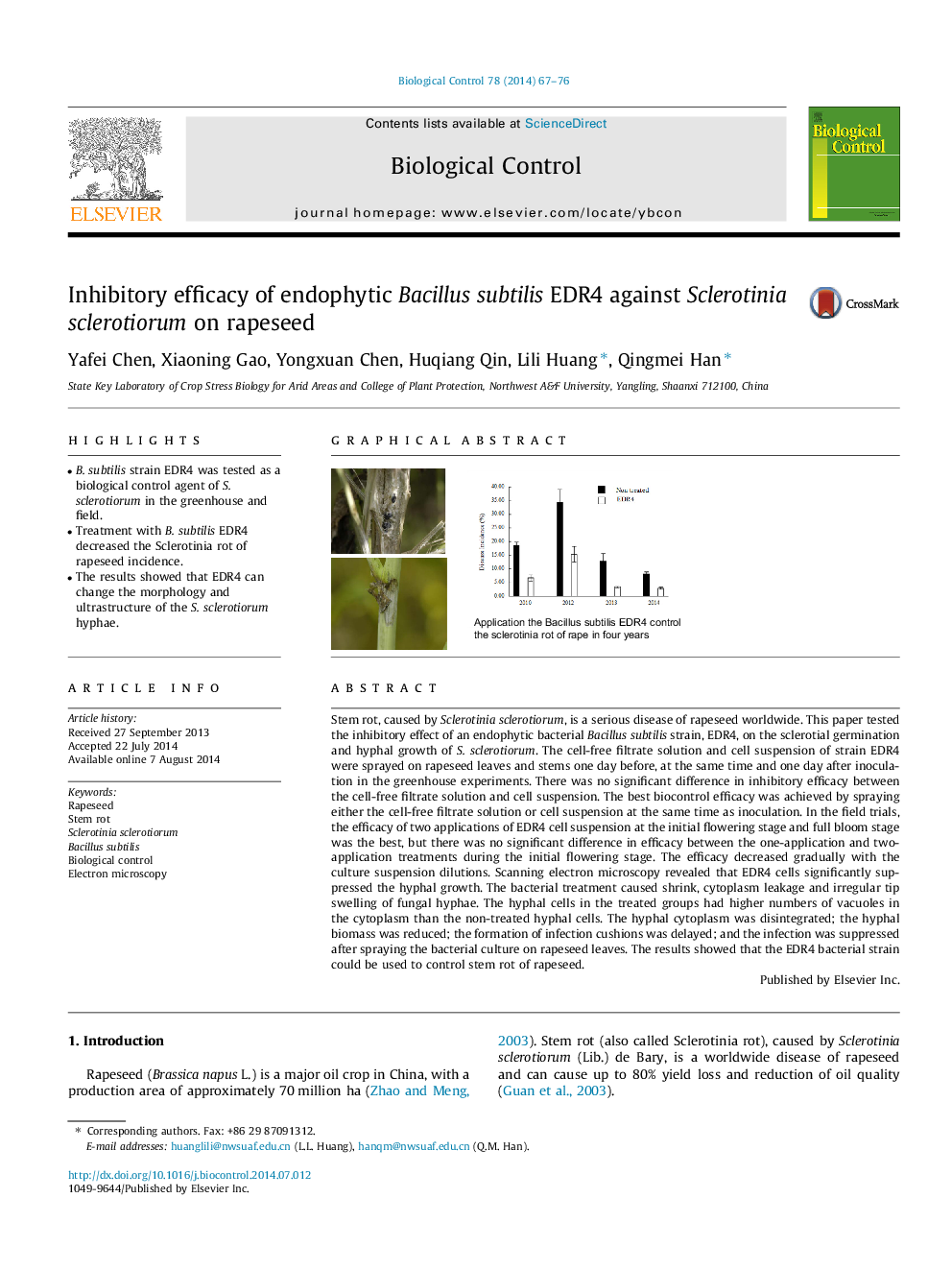| کد مقاله | کد نشریه | سال انتشار | مقاله انگلیسی | نسخه تمام متن |
|---|---|---|---|---|
| 4503855 | 1624256 | 2014 | 10 صفحه PDF | دانلود رایگان |

• B. subtilis strain EDR4 was tested as a biological control agent of S. sclerotiorum in the greenhouse and field.
• Treatment with B. subtilis EDR4 decreased the Sclerotinia rot of rapeseed incidence.
• The results showed that EDR4 can change the morphology and ultrastructure of the S. sclerotiorum hyphae.
Stem rot, caused by Sclerotinia sclerotiorum, is a serious disease of rapeseed worldwide. This paper tested the inhibitory effect of an endophytic bacterial Bacillus subtilis strain, EDR4, on the sclerotial germination and hyphal growth of S. sclerotiorum. The cell-free filtrate solution and cell suspension of strain EDR4 were sprayed on rapeseed leaves and stems one day before, at the same time and one day after inoculation in the greenhouse experiments. There was no significant difference in inhibitory efficacy between the cell-free filtrate solution and cell suspension. The best biocontrol efficacy was achieved by spraying either the cell-free filtrate solution or cell suspension at the same time as inoculation. In the field trials, the efficacy of two applications of EDR4 cell suspension at the initial flowering stage and full bloom stage was the best, but there was no significant difference in efficacy between the one-application and two-application treatments during the initial flowering stage. The efficacy decreased gradually with the culture suspension dilutions. Scanning electron microscopy revealed that EDR4 cells significantly suppressed the hyphal growth. The bacterial treatment caused shrink, cytoplasm leakage and irregular tip swelling of fungal hyphae. The hyphal cells in the treated groups had higher numbers of vacuoles in the cytoplasm than the non-treated hyphal cells. The hyphal cytoplasm was disintegrated; the hyphal biomass was reduced; the formation of infection cushions was delayed; and the infection was suppressed after spraying the bacterial culture on rapeseed leaves. The results showed that the EDR4 bacterial strain could be used to control stem rot of rapeseed.
Figure optionsDownload as PowerPoint slide
Journal: Biological Control - Volume 78, November 2014, Pages 67–76